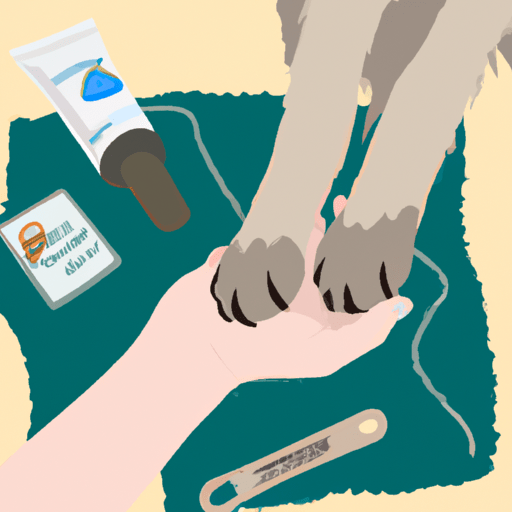As a caregiver, your dog’s well-being is your top priority. One often overlooked aspect of dog care is paw care. Though they may seem tough and resilient, your dog’s paws require regular care to stay healthy. This comprehensive guide will help you understand the importance of paw care and provide you with actionable steps to ensure your dog’s paws remain in top shape.
1. Importance of Regular Paw Care
Your dog’s paws are more than just cute; they’re the primary point of contact with the environment. Just like you would take care of your feet, your dog’s paws require regular attention.
- Protection: Paws protect your dog’s bones and joints from shock during walking and running.
- Temperature Control: Paws help regulate body temperature, releasing sweat in hot conditions and restricting blood flow in cold conditions.
- Sensation: Paws help your dog sense the world, similar to how humans use their hands.
By maintaining regular paw care, you can prevent injuries, infections, and discomfort.
2. Checking Your Dog’s Paws
Regularly examining your dog’s paws is the first step in proactive paw care. Here’s a simple routine:
- Make your dog comfortable and gently take a paw in your hand.
- Examine the pads for cracks, cuts, or pebbles lodged in between.
- Check for abnormalities like swelling, redness, or foreign bodies.
- Look at the nails to see if they’re too long or broken.
- Repeat with all four paws.
3. Cleaning Your Dog’s Paws
Regular cleaning can prevent infections and help your dog stay comfortable. Here’s how:
- After walks: Rinse your dog’s paws with warm water to remove dirt and potential allergens.
- Weekly: Use a dog-friendly paw cleaner or mild soap. Rinse thoroughly and pat dry.
- Monthly: Consider a paw soak in a solution of water and dog-friendly shampoo.
4. Paw Pad Care
Your dog’s paw pads can crack, bleed, or get injured. Here are some tips for pad care:
- Moisturizing: Use a dog-friendly paw balm or wax to moisturize dry pads.
- Protection: Use booties or paw wax for protection during extreme weather or on harsh terrain.
- First Aid: If your dog’s pad is injured, clean with warm water, apply a dog-friendly antiseptic, and bandage lightly. If severe, consult a vet.
5. Nail Trimming
Long nails can cause discomfort and affect your dog’s gait. Here’s how to trim nails safely:
- Use a dog nail clipper or grinder.
- Trim a small amount at a time to avoid cutting the quick (the sensitive part inside the nail).
- If you cut the quick, apply styptic powder to stop the bleeding.
- If uncomfortable doing this, consult a professional groomer or vet.
| Nail Care Tools | Use |
|---|---|
| Dog Nail Clippers | Cutting nails |
| Grinder | Smoothing nails |
| Styptic Powder | Stop bleeding |
6. Hair and Dewclaw Care
Hair between pads can attract dirt and cause discomfort. The dewclaw (similar to our thumb) can get caught and tear if not maintained. Trim hair and dewclaw regularly, or have a professional groomer do it.
7. Recognizing Paw Problems
Early recognition of paw problems can help prevent serious issues. If you notice any of the following, consult a vet:
- Persistent licking or chewing of paws
- Limping or favoring a paw
- Swelling, redness, or bad odor
- Changes in nail color or growth pattern
8. FAQ
Q: How often should I check my dog’s paws?
A: Ideally, check after each walk and perform a thorough check weekly.
Q: What if my dog doesn’t like having their paws touched?
A: Start slow, reward your dog for allowing you to touch their paws, and gradually increase the duration.
Q: Can I use human moisturizer on my dog’s paws?
A: No, some ingredients can be harmful. Always use dog-specific products.
Q: My dog’s pads are rough and cracked, is that normal?
A: Pads will be tougher than human skin, but if they’re excessively dry or cracked, consult a vet.
Remember, paw care is an integral part of your dog’s health and well-being. By following this guide, you’ll help your furry friend stay happy, healthy, and ready for the next walk or adventure.



